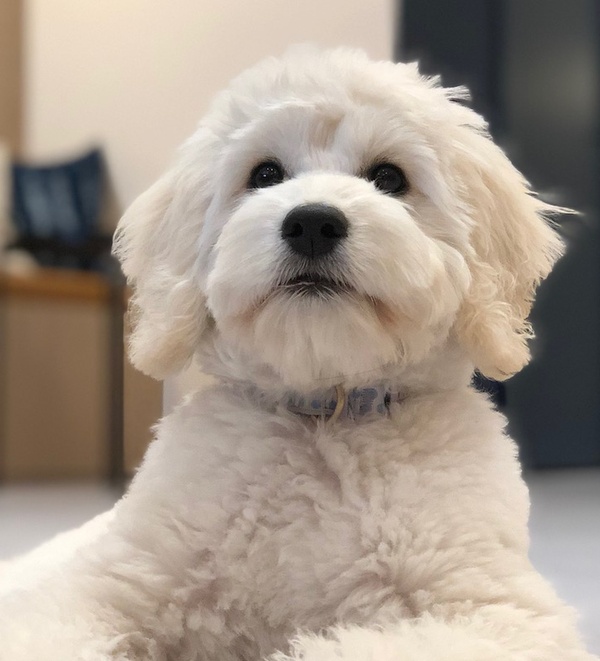
Reverse Sneezing in Dogs
A reverse sneeze is a lot like a regular sneeze in many ways — except that air moves into the nose rather than out. It’s an involuntary reflex/spasm of the soft palate that sounds a lot like snorting.
Since reverse sneezing (also known inspiratory paroxysmal respiration) is normal for many dogs, especially smaller breeds, reverse sneezing is usually not a big concern. However, if severe, reverse sneezing may adversely affect quality of life.
What Does Reverse Sneezing in Dogs Look Like?
A reverse sneeze looks and sounds like a combination between snorting and sneezing. It’s a noisy occurrence, which may happen several times in a row.
Other symptoms of reverse sneezing in dogs may include gagging or retching. An affected dog may appear uncomfortable and stop whatever they were doing until the episode passes.
What Causes Reverse Sneezing in Dogs
Anything that irritates the nose or upper throat can cause reverse sneezing. Common culprits include:
- Allergens (spores, pollen, dust, etc.).
- Smoke.
- Infections of the nose and throat, or excessive mucus.
- Scented room sprays, candles, perfumes, etc.
- Getting water in the nasal passages.
- Less common causes include foreign objects stuck in the nose, or certain underlying diseases of the nose, mouth, or throat such as tumors.
For some dogs, especially smaller dogs, over-excitement can also lead to reverse sneezing. For example, your pooch may have a reverse sneezing episode right after you get home from work because they’re excited you’re home.
How Is Reverse Sneezing in Dogs Diagnosed?
Often, reverse sneezing can be diagnosed just by observing a dog during an episode, by the characteristic appearance and sounds of a reverse sneeze. A veterinarian may highly suspect reverse sneezing based on your description — and if you’re able to record a short video on your phone to show your vet, that can help confirm the diagnosis.
If this is a new symptom for your dog, your veterinarian may recommend diagnostic tests to rule out other conditions such as infections, parasites, or underlying diseases. Common tests include a nasal swab, x-rays, allergy testing, and tests for overall health such as bloodwork. Some dogs may need a more detailed exam of the nose and throat using a scope.
SEE ALSO: Why is My Dog Not Eating or Drinking?
How Is Reverse Sneezing in Dogs Treated?
Home remedies to try during an episode of reverse sneezing:
- Most commonly, reverse sneezing just requires patience — with you waiting and observing your dog. Reverse sneezing is over quickly (sometimes in just seconds), and once the episode passes, you and your pup can resume your daily activities.
- Keep your pet as calm as possible. Try to be calm yourself, so your pup follows your lead. Speak in soothing tones.
- Encourage your pet to swallow with a gentle neck massage, or by offering them a drink of water. Sometimes this helps.
- If your pup has an episode while outside, in a smoky environment, or anywhere else where there’s an obvious trigger, remove them from the situation. Bring them indoors (away from irritants, pollen, etc.) or to a scent-free location.
Long-term solutions for reverse sneezing:
- Avoid triggers as much as possible. Don’t allow smoking or strong scents in the home. Watch the pollen forecast, and minimize time outside when allergen counts are high.
- Ask your vet about medications. If your dog only has an occasional episode of reverse sneezing, medicines might not be beneficial, since it’s difficult to predict exactly when an episode will happen. But if your pup is more severely affected (especially during allergy season), your vet may recommend an antihistamine or anti-inflammatory medication. Follow your vet’s recommendation for the type of medication and dosage, as not all human meds are safe for pets!
- If your pet’s reverse sneezing is triggered by excitement, talk to your vet or a behaviorist about ways to positively interact with your pet without over-exciting them. As a general rule, remaining calm yourself and speaking in a low, soothing voice (avoiding high-pitched, excited tones) often helps.
SEE ALSO: How Can I Tell If My Dog Is Sick?
Can Reverse Sneezing in Dogs Be Prevented?
The best bets for prevention are to follow the recommendations above, under long-term solutions. Avoiding triggers is important. So it may help to keep a journal for when your pooch has reverse sneezing episodes, to see if you can pinpoint what caused them.
Keeping your pal in the best overall health possible is also a good idea. For example, routine vaccinations can help to prevent infections of the nose and throat.
When Should I See a Vet If My Dog Has Reverse Sneezing?
In nearly all cases, reverse sneezing doesn’t require rushing a dog to the vet, and a dog should act like their normal self before and after the episode.
Although reverse sneezing appears very dramatic, it’s extremely rare for reverse sneezing to be an emergency. However, it’s possible for reverse sneezing, especially if frequent or severe, to cause discomfort and interfere with a pup’s daily activities and quality of life. Also, dogs with underlying respiratory conditions (like a collapsing trachea or COPD) may be more severely affected.
Be sure to schedule a vet visit if this is a new symptom for your pet, or if it’s getting worse. Also, mention your pet’s reverse sneezing during wellness checkups, so your vet can note it in the medical record and track any changes over time.
By knowing what’s normal for your pet, avoiding triggers, and communicating with your vet, you can create a management plan to ensure your dog has a great quality of life — without reverse sneezing getting in the way!